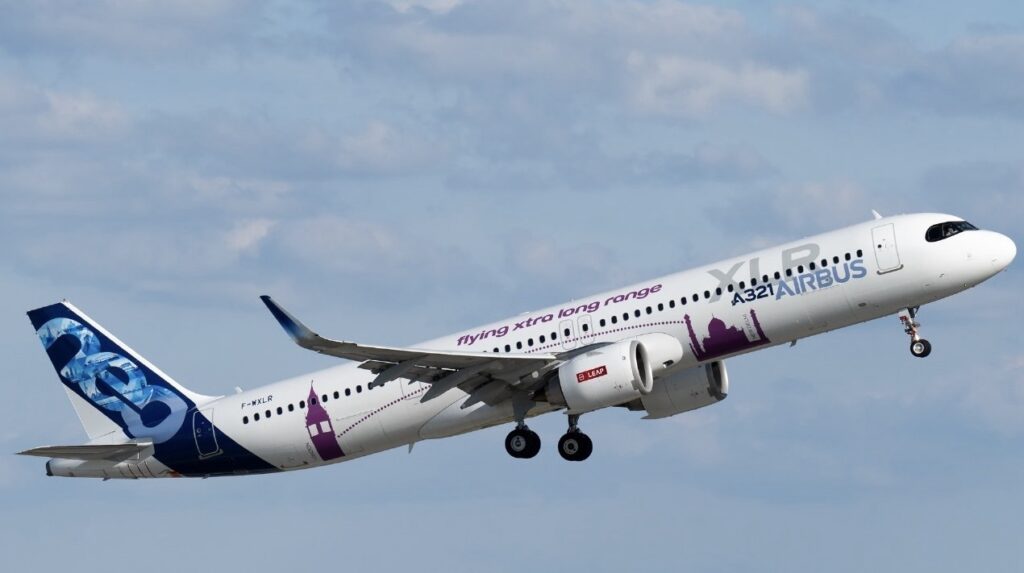Airbus is swiftly completing the final phases of testing before delivering the inaugural A321XLR aircraft to its launch customer, Iberia.
On October 1, 2024, the first aircraft designated for delivery completed its initial flight test at Airbus’ facility located at Hamburg-Finkenwerder Airport (XFW), near Hamburg, and was already adorned in Iberia’s colors.
Iberia has planned its inaugural A321XLR flights for October 26, 2024, when it will operate two rotations from its Madrid-Barajas (MAD) hub, initially heading to London-Heathrow (LHR) and then to Paris-Charles de Gaulle Airport (CDG) later that same day.
Airbus has proclaimed that the aircraft’s development is “nearing completion” and has confirmed that the European Union Aviation Safety Agency (EASA) has granted certification for the A321XLR to operate commercially using the CFM International LEAP-1A engine. Accreditation for the variant powered by the PW1100G is anticipated later this year.
As excitement builds for the commercial launch of this innovative aircraft, let’s examine which airlines have placed orders for the A321XLR and their intended uses for it.
Airlines That Have Ordered the A321XLR
IndiGo-69, American Airlines -50, United Airlines – 50, Wizz Air – 47, Qantas – 36, Air Canada – 30, Air Arabia – 20, Air Asia X – 20, VietJet – 20, Jet Smart – 14, Icelandair – 13, JetBlue – 13, LATAM – 13, Cebu Pacific – 10, Flynas – 10, Iberia – 6, Aer Lingus – 6
Although Airbus does not disclose a comprehensive list of customers for the A321XLR due to competitive concerns, it has confirmed more than 550 orders from 25 airlines. Below is a recap of the most significant airline orders:
Iberia
Initially, Aer Lingus was set to operate the first commercial flight with the A321XLR following IAG’s order. Nevertheless, Iberia will now proudly take the lead as the first airline in the world to operate this aircraft. Commencing on November 14th, Iberia will initiate A321XLR services from Madrid (MAD) to Boston (BOS), providing travelers with 14 lie-flat seats in business class, ensuring an elevated standard of comfort on this transatlantic journey.
IndiGo
IndiGo, India’s budget airline and one of Airbus’ major clients, boasts the largest order for the A321XLR, with 69 planes confirmed. According to CEO Pieter Elbers, IndiGo anticipates welcoming its first A321XLR into its fleet in 2025, representing a significant step in the airline’s ambitious goal to double its fleet size by 2030. The XLR will be instrumental in the airline’s international growth strategy.
The Xtra Long Range Capabilites

Some might contend that the A321XLR is just a progression of the current A321neo series, particularly since the long-range (LR) variant is already operational. Nonetheless, the A321XLR represents far more than a mere addition. When evaluated alongside other A321neo variants, its enhancements are noteworthy:
A321neo: Introduced in 2017, it delivers a 15% decrease in fuel consumption relative to the A321ceo and boasts a range of 3,500 NM (6,480 km).
A321LR: Launched in 2018, this long-range model incorporated three auxiliary fuel tanks to increase its range to 4,500 NM (7,410 km), presenting a compelling alternative to the Boeing 757-200 with 25% lower costs per seat.
A321XLR: A true advancement, it accommodates up to 244 passengers and can achieve a range of 4,700 NM (8,700 km), reflecting a 35% increase in range over the A321neo. This is made possible by a fixed rear-center fuel tank with a capacity of 12,900 liters (3,400 US gallons) and results in a 30% reduction in fuel consumption compared to older rivals.
Facilitating New Business Models
The extended range of the A321XLR creates fresh opportunities for airlines, transforming their operational strategies and paving the way for innovative business models:
Route opener: Airlines can now venture into long-haul routes that were previously too risky for larger widebody aircraft. For example, Delta could initiate new services from JFK to smaller European destinations such as Turin, Krakow, or Bratislava. If these routes prove successful, they can subsequently be upgraded to accommodate larger aircraft.
Hub-buster: The A321XLR empowers airlines to circumvent conventional hub-and-spoke systems. Low-cost carriers could connect cities like Boston to Bordeaux or Baltimore to Bologna without depending on traditional hubs.
Right-sizing: For carriers like Delta and United, the A321XLR is an excellent substitute for aging Boeing 757s. It also provides a more cost-effective option for routes that are currently served by underused widebody aircraft such as the A330, B767, and B787.


